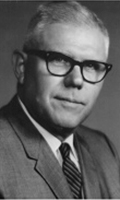College of Architecture honors six distinguished former students
Six former students from Texas A&M’s College of Architecture who have risen to the top of their professional field while making significant public service contributions were honored Oct. 11, 2013 as outstanding alumni at the Miramont Country Club in Bryan, Texas.
The group, nominated by former students and selected for their outstanding achievements by a college committee, was honored at the 2013 College of Architecture Outstanding Alumni Awards Banquet.
Less than one percent of the college’s 15,000 plus former students have been recognized as outstanding alumni, the highest honor bestowed by the college to former students.
The 2013 College of Architecture Outstanding Alumni are: Laurie Johnson ’88 , principal at Laurie Johnson Consulting; Tom Owens ’73 ,senior managing director and chief risk officer for Hines; Craig Reynolds ’77 ,managing principal at Brown Reynolds Watford Architects; Michelle Robinson ’91 , an artist at Walt Disney Animation Studios; the late Robert Rucker ’38 ,alandscape architect and educator, and David Thompson ’72, recently retired senior vice president and federal sector leader at RTKL Associates, Inc.
Laurie Johnson ‘88
Principal, [Laurie Johnson Consulting] (http://www.lauriejohnsonconsulting.com)
Johnson, who earned a [Master of Urban Planning] (http://laup.arch.tamu.edu/academics/graduate/mup/) degree at Texas A&M, has used her expertise in urban planning, disaster recovery and risk management to help governments respond to catastrophic events in New Orleans, Los Angeles, the San Francisco Bay area, New Jersey and North Dakota.
“Johnson is in the top tier of disaster recovery experts in the world because of her intellectual leadership over the years,” said William Anderson, a disaster risk reduction consultant. “Her research following the 1989 [Loma Prieta] (http://www.mercurynews.com/loma-prieta-earthquake) and 1994 [Northridge] (http://www.history.com/topics/northridge-earthquake-of-1994) earthquakes in California helped advance our understanding of the role of urban planning in risk reduction.”
Her San Francisco-based firm, [Laurie Johnson Consulting | Research] (http://www.lauriejohnsonconsulting.com) , also helps governments mitigate hazards and regulate land use in geologically hazardous areas and pursues a research agenda that complements and advances the firm’s consulting practice.
“Johnson has become a leading voice in hazard mitigation by pursuing a unique mix of research, practice, and volunteer service,” said Joseph Pobiner, a master planning and urban design consultant.
Johnson’s firm has been engaged by the U.S. Geological Survey, the Federal Emergency Management Agency, the U.S. Department of Housing and Urban Development and other government agencies to help improve disaster recovery plans and programs and communicate disaster-related science.
Her publications include peer-reviewed papers in the Journal of the American Planning Association and the International Journal of Mass Emergencies and Disasters and she has research affiliations with Columbia University and the University of Illinois.
Tom Owens ‘73
Senior managing director and chief risk officer, [Hines] (http://www.hines.com/home/default.aspx)
Owens, who earned a Bachelor of Science in Building Construction degree at Texas A&M, has managed the development of more than seven million square feet of office and retail space valued at approximately $1.5 billion for Hines, a Houston-based developer.
“He seeks the highest levels of design excellence for each of Hines’ signature projects while meeting strict construction schedules and stays within the financial guidelines for those projects,” said Wayne Shull, principal of Kendall/Heaton Associates Inc., a Houston architecture and planning firm, who collaborated with Owens when he was a project officer overseeing building construction, financing, leasing and operating.
In 1996, Owens began concentrating on the firm’s finances as a senior vice president and a member of Hines’ investment committee, using his experience in fund management, asset and portfolio management and project acquisition and disposition.
As a co-manager of Hines’ U.S. Office Development Fund, he helped to produce a 119-percent return to investors after planning, building, leasing and selling a three-building project.
In a venture with Morgan Stanley, Owens helped provide investors with a 56-percent return after purchasing and selling a 15-building office complex.
After his promotion to his current position in 2012, Owens oversaw the creation of a new Hines general contracting operation for its Texas, Georgia, Florida and Colorado projects, assumed veto authority on all Hines investments and developments and gained membership in Hines’ executive committee, which manages the firm’s operations.
A strong supporter of Texas A&M’s [Department of Construction Science] (http://cosc.arch.tamu.edu) for many years, Owens has raised more than $500,000 for the renovation of [Francis Hall] (http://cosc.arch.tamu.edu/francis-hall/) , the department’s future home.
He also has a commitment to improve living conditions throughout the globe.
As a certified water well repair technician, Owens travels to Central America every two years to repair or drill water wells. He also traveled to southern Sudan in 2005 to repair water wells and deliver medical and school supplies.
Craig Reynolds ‘77
Managing principal, [Brown Reynolds Watford Architects] (http://www.brwarch.com)
Reynolds, a member of the American Institute of Architects’ [College of Fellows] (http://network.aia.org/cof/Home/) , leads BRW’s collaborative efforts in transforming complex, multiphase, multiple-funded source projects into award-winning architecture.
Among BRW’s recent projects are Texas A&M’s new Arts and Humanities [Building] (http://creative.brwarch.com/2013/01/23/a-visit-to-the-new-am-liberal-arts-humanities-building/) , completed in 2012.
“I am thrilled with the design and, along with my colleagues and students, am now enjoying all the opportunities our new facility provides,” said Judith Hamera, professor of performance studies, who headed the College of Liberal Arts’ efforts to select an architect. “I was very pleased to see BRW’s flexibility and creativity in the planning process that met both the aesthetic and infrastructure needs of the college’s music and theater programs.”
Reynolds is also overseeing BRW’s efforts in the renovation of Francis Hall, which is the future home of the Department of Construction Science, the restoration of [Old Main] (http://www.txstate.edu/about/history-traditions/old-main.html) at Texas State University, the expansion of the Maedgen Theatre at Texas Tech and the recently completed music [building] (http://web.tamuc.edu/academics/colleges/humanitiesSocialSciencesArts/departments/music/newMusicBuilding.aspx) at Texas A&M University-Commerce.
He has also led many public service projects in Texas, including a critical role in a Dallas ISD bond election.
“His masterful, civic-minded work was essential in winning landslide support for a huge bond program in 2002 that will provide benefits in Dallas for decades,” said Mike Moses, a former Dallas ISD superintendent.
The district was reeling from political turmoil, community division, criminal behavior from past leaders and disillusionment among staff, students and taxpayers, but with Reynolds’ participation as a key factor, said Moses, 78% of voters approved the bond measure.
Michelle Robinson ‘91
Artist, [Walt Disney Animation Studios] (http://www.disneyanimation.com)
Robinson, who earned a [Bachelor of Environmental Design] (http://dept.arch.tamu.edu/undergraduate/) degree and studied in the Master of Visualization program, has helped bring digitally created characters to life in many memorable, full-length features including “Wreck-It Ralph,” “Tangled,” “Bolt,” “Meet the Robinsons” and “Pocahontas.”
“There is no person more respected and admired for her calm determination, her unflappable positive attitude, her impeccable taste and her total commitment to excellence in every aspect of the job,” said Mike Gabriel, an art director at Disney. “She has proven over the years that she is one of the true artists in our industry.”
As a character look development supervisor at Disney, Robinson manages the artists who paint textures, create hair and fur in 2-D and 3-D films.
A frequent visitor at the [Department of Visualization] (http://viz.arch.tamu.edu) as a guest lecturer, student mentor and graduate student committee member, she has also recommended students to recruiters at Disney.
“She actively participates in face-to-face and online discussions with students, providing candid answers to their questions about employability, the realities of industry and the role of the Viz program in training them,” said Brandon Jarratt, an assistant technical director at Disney.
She has also served as a visiting instructor and production manager in the department’s summer industry course, in which students conceive and create an animated short video.
“I am a big believer in the Viz program,” said Robinson. “It was generous to me, and I looked for a way to give back. I leave Texas A&M after each visit with a renewed sense of purpose and an energy that comes from being with such engaged and eager students.”
Robert Rucker ‘38
Landscape architect, educator
posthumous award
One of Texas’ pioneers of landscape architecture, Rucker helped begin the transformation of the state’s roadsides into the springtime delights they are today, completed 12 master plans for universities in four states and is primarily responsible for the tree-lined look of Texas A&M’s streets.
After graduating with bachelor’s and master’s degrees in landscape architecture in 1938 and 1939, Rucker turned Texas’ roadsides from afterthoughts to landscapes filled with wildflowers as a roadside development employee with the Texas Highway Department.
World War II, however, interrupted his career, and he was called to active duty as a captain in the U.S. Army in 1942. One of Rucker’s legs was blown off by a mine while he was commanding an infantry division during a battle in Tunisia. Thought to be dead, Rucker lay wounded for 24 hours before he was rescued and given medical attention.
His artificial leg, which he named “Oscar,” eventually became the center of many of the humorous stories Rucker enjoyed telling.
After the war, he worked as a landscape architect, campus planner and faculty member at Baylor University, the University of Oklahoma, Texas Technological College in Lubbock, Texas, eventually returning to Texas A&M in 1968.
Rucker’s return, said Michael Murphy, retired professor of landscape architecture, was at an important time in the campus’ development.
“He was responsible for planting many of the campus’ oak trees,” said Michael Murphy, one of Rucker’s former students. “The live oaks he added to the campus are not only the majority of the trees that exist on campus, but some of the largest and oldest.”
David Thompson ‘72
Retired senior vice president/federal sector leader, [RTKL Associates, Inc.] (http://www.rtkl.com)
Thompson, who earned Bachelor of Environmental Design and [Master of Architecture] (http://dept.arch.tamu.edu/graduate/master-architecture/) degrees, provided design and management leadership for more than 10 million square feet of security intensive, technologically complex, large scale buildings serving the unique needs of the U.S. intelligence community, government agencies and the military.
A member of the American Institute of Architects’ College of Fellows, Thompson, who retired in April 2013, led the design and construction of structures that provide perimeter security for the U.S. Capitol, Supreme Court, congressional office buildings and the Library of Congress.
The U.S. government gave Thompson a one-year deadline to rebuild the Pentagon after the terrorist attacks of Sept. 11, 2001.
Within two weeks, a Thompson-led team of 32 architects was designing the building’s reconstruction, and the project was completed two months ahead of schedule.
“Thompson and his team worked literally day and night,” said Lance K. Josal, RTKL’s president and CEO.
“He has led some of the most complex and sensitive assignments ever awarded by the federal government, mentoring a widening group of practitioners along the way,” said Josal. “Thompson’s work is a great source of national pride and an example of his professional commitment,” said Josal.
Among his many honors are a commendation from Donald Rumsfeld, U.S. secretary of defense, a Special Commendation in Historic Resources from the Washington, D.C. chapter of the AIA for his work on the Pentagon, the Army Chief of Engineers Design Award and the Max O. Urbahn Medal from the Society of American Military Engineers for contributions to architecture in 2002.
“He has emerged as perhaps the country’s foremost expert on the integration of technical security requirements into the built environment, creating architecture that avoids the bunker approach of so many secure buildings and embracing a more holistic, balanced approach to design,” said [Harold Adams] (http://archone.tamu.edu/college/news/newsletters/spring2011/stories/Adams_awarded.html) ‘61, a retired chairman of RTKL and an outstanding alumnus of the college.
Thompson is also recognized as a pioneer in using computers in architecture, championing digital design at RTKL in the early 80s. He helped co-author 3-D modeling and visualization software and database applications and shared his knowledge through AIA national roundtables and lectures.
Next Post
Tags
- architecture
- art
- building a better texas
- class acts
- college culture
- construction science
- events
- feature
- honors
- land development
- landscape architecture & urban planning
- planning
- rss
- sustainability
- visualization
Related Posts

College honored outstanding alumni at Oct. 14 ceremony

Summit explored education advances with ‘smart’ cities

College honors outstanding alumni at annual ceremony

College names 2012 Outstanding Alumni
Follow Us
Facebook Twitter Vimeo Youtube Flickr RSS
Recent Posts

Planning prof heads study of disaster housing aid

A message from the dean

Former student remembered as expert planner

Leading educator named new head of Architecture Dept.











_thumbnail_small.png)
